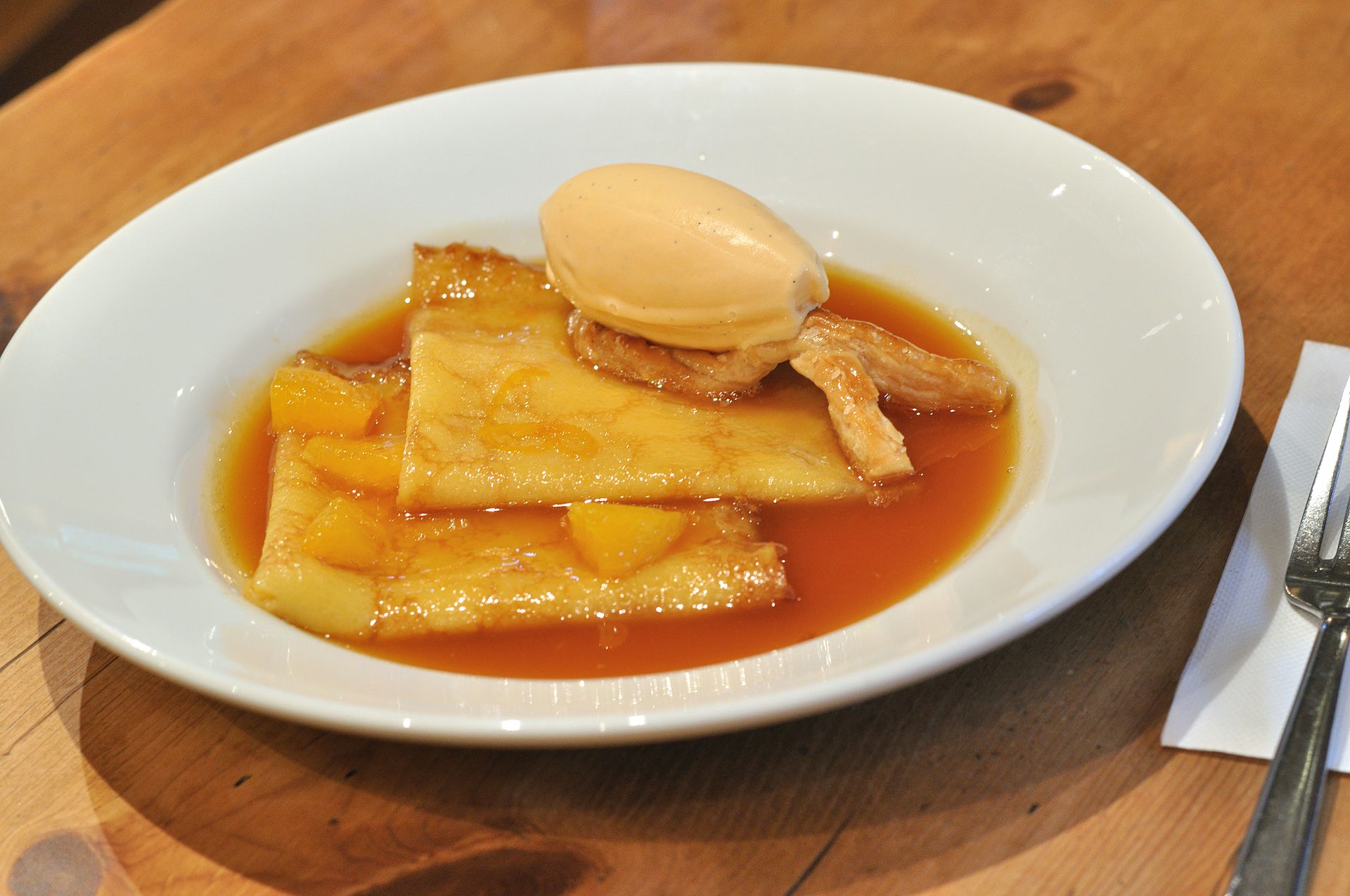Crepes are one of the more famous French cuisine dishes. Crepes are similar to pancakes; not just by its shape but also with its method of cooking. It is very thin and pancake-like, usually made from wheat flour, egg, and milk. It is a staple food in France, but its popularity spread all over the world.
Origin
The word crepes derive from the Latin word “crispus” or “crispa”, meaning “curled” or “curly.” It originates from the northwest region of France known as Brittany – “Bretagne” in French. This region of France is known for having rainy weather making them also popular for their ciders to keep them warm. In Brittany, crepes are usually served with cider.
The original French crepe batter is made from wheat flour and is usually has a sweet taste. Crepes that are made from buckwheat flour, called a “galette”, were invented after the Crusades brought buckwheat to France and has a salty flavor. A batter made from 100% buckwheat flour is gluten-free which makes it possible for people with a gluten allergy to eat crepes.
Crepe Suzette
There is some dispute as to the origin of the name “Suzette” in crepe Suzette. Some say that French Chef Henri Charpentier is the creator of this authentic delicacy that is a flavorful variety of crepe. It was in 1895 when the prince of Wales -the future King Edward VII – dined at Monte Carlo’s Café de Paris in Monaco. During that night, the prince of Wales requested a luxurious crepe. Chef Henri Charpentier then made a crepe and put some oranges and brandy onto it and lit it making the iconic crepe. This dish is thought to be named after a prince’s dinner guest (Suzette), thus giving it the name crepe Suzette.
But there is another version to this story. Based on Henri Charpienter’s own story, he stated that he made the dish by mistake. He was preparing the dessert when it accidentally was burned. He thought that the dish was totally ruined. He tasted it and he thought that it was the most delicious sweet flavor he ever tasted. He served it to the prince of Wales whom asked him the name of the dish which he had eaten with much relish. Charpentier told him that it was to be called “Crepe Princesse.” The prince thought that the crepe was a compliment designed for him, but he was protested with mock ferocity because there was a lady present. The lady rose to her feet and made curtsey to the prince. To appease the lady, the prince suggested to change the name from Crepe Princesse to Crepe Suzette.
Other claims say that the dish was named in honor of French actress Suzanne Reichenberg who worked under the stage name Suzette. Reichenberg appeared in the Comédie Francaise, a theater in France, which she plays the role of a maid in 1897. She has a scene where she served crepes on stage. The owner of Restaurant Marivaux, Monsieur Joseph, provided the crepes which he decided to flambé it to attract the audience and keep the dish warm for the actors consuming it.
National Crepes Day
February 2 in France is considered a National Holiday. It is a celebration known as the “Day of Crepes” or “Le Jour de Crepe” and is more of a familial custom than a religious celebration. Also celebrated on February 2 is “La Chandeleur,” meaning “the return of the light”. It commemorates to the season where dark winter is ending, and spring light is coming.
In medieval times, peasants presented crepes to their feudal lords to symbolize their loyalty and friendship. They also believe that eating many crepes to finish the wheat stock of the past harvest will give a fortune for the new harvest of the year to come.
During this day, according to the legends, if you make a wish holding a coin on your hand while cooking crepe, on the other hand, will grant your wish. It is also said that you will have a prosperous year.
Creperies
Crepes are now being cooked at a fast-food or a street-food style creperie. A creperie can be a take-out restaurant, a stall or a café. Paris boasts a street with vendors selling crepes side-to-side. Parisians and tourists flock to these stalls to have a fast French lunch or snack. Creperies are common in France but it is also popular throughout Europe, parts of the United States and Tokyo in Japan. Creperies are also common in Canada especially in Quebec, a Canadian province, because of strong French influence in the area. In the town of Quimper, they have a museum dedicated to the history of crepes. It is at “Place au Beurre” or “Butter Square.”
Modern Crepes
As time progressed, crepes have had plenty of variations with so many countries offering crepes. It may be eaten with salted caramel, fruit jam, melted dark chocolate, feta cheese, goat’s cheese, sugar, honey, mushroom or hazelnut-chocolate. It can be filled up in a number of ways, but it remains the paper-thin dish it has ever been. Since the 20th century, crepes may now be made with white flour instead of wheat flour or buckwheat flour but still cooked the same way as it was originally. Although crepes are great to eat solo they are popularly paired with drinks such as coffee, cider, milk, and tea.

